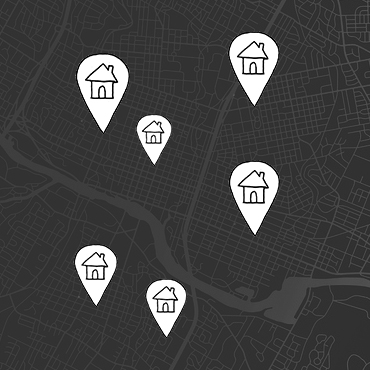Foundation Communities, a nonprofit organization, recently received $13.5 million from the Texas Department of Housing and Community Affairs to build an affordable housing complex, coined “The Jordan,” in the Mueller Community of northeast Austin. This complex, which will contain 132 units, is intended for families making 50 to 60 percent of what is considered the median family income. Fourteen of these units are set aside for families experiencing or at risk of homelessness.
While this project should be celebrated as a potential avenue for low-income families and those at risk of homelessness to gain affordable access to shelter, we shouldn’t forget that access to affordable living goes beyond housing. The majority of mixed-income housing developments suitable for families are located in East Austin. This area already notoriously had less access to quality community resources such as public transportation, schools and parks that must be considered in discussions surrounding affordable housing. Ignoring this only furthers the cyclical nature of poverty.
A large portion of the government-subsidized developments available for low-income families and those on the brink of homelessness are located in the most resource-deprived areas of the community. Many Austinites know that Austin is segregated, but few understand that city policies such as this one are a large part of what perpetuates this historical atrocity by placing low-income families in low-resource areas.
Austin policymakers must expand affordable housing options throughout the city, not just in East Austin.
Heather Way, clinical law professor and director of the Entrepreneurship and Community Development Clinic, expressed deep concern on this issue. “In the city, historically, affordable housing programs were heavily concentrated in lower opportunity areas and areas with high concentrations of poverty,” Way said. “We know from many studies that where you live has a huge impact on the access to opportunities and your life outcome.”
Individuals and families fall victim to poverty as a consequence of the poor situations they live in. A lack of access to good opportunities hinders a community’s well-being, so when resources are insufficient, quality of life goes down.
East Austin does not have access to the same resources enjoyed by Central and West Austin, where rent is higher. East Austin is known for less access to bus routes, which prevents people who can’t afford a car from having a reliable method of transportation. Furthermore, this region is home to many of what are considered the most underperforming schools in Texas.
These may seem like small considerations, but I’ve seen firsthand how strongly they impact families. While working at a nonprofit dedicated to helping low-income East Austin residents secure housing last semester, I struggled in explaining to clients new to Austin how to navigate the poor public transportation system within East Austin. A transit system that requires residents to get on three different buses just to get two miles across the city from East to West Austin is neither efficient nor accessible, and it exacerbates the very problems that affordable housing is supposed to alleviate.
Although poor resource accessibility cannot be fixed overnight, city officials can best effect change by approving and promoting more affordable housing projects in areas of Austin with better access to quality resources.
Resources such as the new Austin Central Library and Zilker Park are fantastic, but only if all members of the community have access to them. Yes, building affordable housing developments in these areas will be more expensive, but it’s an investment we should be willing to make. If Austin residents truly care about the city’s housing problem, they must pressure policymakers to approve affordable developments in all areas, not just on the east side.
Braaten is an international relations and global studies junior from Conroe. She is a senior columnist.





















